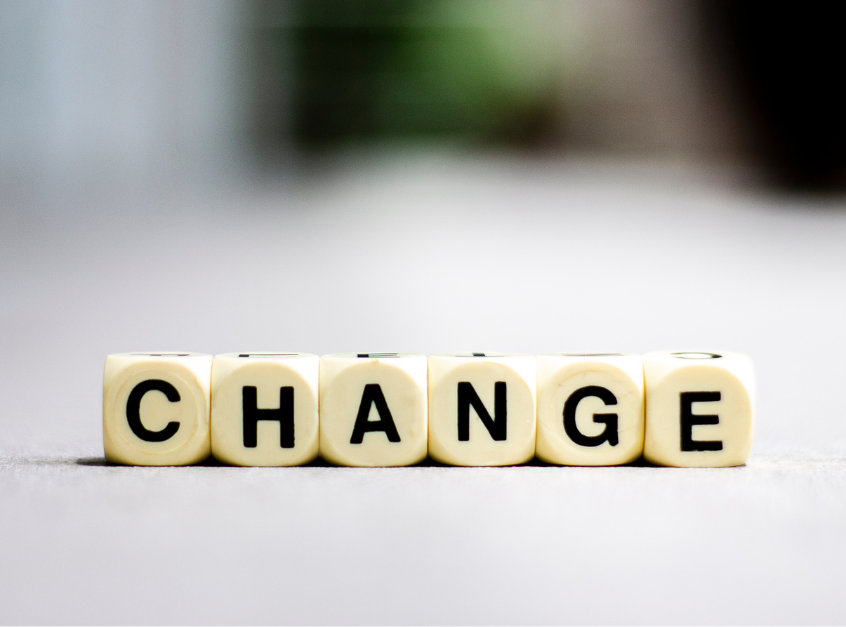Is your approach to change adoption the best it can be? Part 2

‘Its more about People… than processes and technology’ … it really is!
In our last blog we talked about carefully designing your change adoption process so you could realise all the benefits of your change activities. We said that truly successful change adoption relies on acting on the following:
- It is more about people…. than processes and technology
- It is about engagement … more than communication
- It is about collaboration …. more than individual expertise
- It is about involvement early in the work … more than training at the ‘end’
In this blog we’re going to focus in on people and some of the reasons why we might resist even straightforward changes to our patterns and practices, and what we can do in our change adoption process that might help.
Our brains are amazing – there is a near constant flow of decision making going on. Research has shown adults can make up to 35,000 decisions a day. Assuming you sleep the average 7 hours a night, that makes about 2000 decisions per hour or 1 every 2 seconds. But we’re barely aware of it – and that’s because we’ve all developed a series of cognitive biases or mental shortcuts that filters some decisions into awareness and some into just automatic responses.
And those biases have some core programming to them – largely they’re in place to protect our ego, to maintain the status quo as much as possible and to retain our standing within important social groups. So – they are a bit anti-change! And that makes them most unhelpful
during complex change.
Those are just four of 50 common cognitive biases that affect our everyday decisions and actions, they are ‘predictably irrational’ as Dan Ariely’s says. Using these wisely, as a lens, to help design your adoption approaches increases the probability of success. Let’s look at four of the most important in more detail.
Negativity Bias
We’ll remember and be affected more by the negative than the positive
It’s unlikely that this is anyone’s first ‘change rodeo’ and if something has gone wrong in the past, people have been negatively affected by a change, they will remember it much more acutely than any successful, pain free changes they’ve been through.
What can we do? Listen, ensure people have an opportunity to share when and why things might not have worked in the past. Involve those who are cynical in early design and testing. Allow them to bring the voice of that experience to create value. Identify the risks and be transparent about how you’re going to mitigate them.
Loss Aversion
Psychological pain of loss is far greater than the pleasure of gain – even when we don’t have the thing that’s at risk of loss
Let say our change means automating a manual process. We promise it will save you 20 minutes a day. Once operational, it turns out it only saves you 10 minutes a day. To our brains, the pain of losing 10 minutes (even though you never had them) outweighs that you’ve gained 10 minutes. Therefore, the change failed!
What can we do? Set a compelling vision that details all of the gains but be realistic about the impact of changes on people. Carefully consider the changes your asking people to make to their behaviours and scenario plan the gains/losses – both for your business plan and your engagement plan. Consider the impact of a change on someone’s sense of autonomy or ego and how that can be mitigated – a good stakeholder plan can be hugely helpful for this.
Endowment Effect
The emotional attachment we have to things that we ‘own’ can be higher than what they’re worth
This is exactly what we want in a change – it’s ‘buy-in’ and when we emotionally attach we will make more effort for something to work. But this can also work against us. Consider the fact that someone designed the systems or processes as they are now – they are going to be more emotionally attached to the status quo.
What can we do? Don’t criticise the old way to ‘big up’ the new way. Almost everything is an evolution, this is easier for us to adapt our mindsets to. Engage the designers of the status quo and discover their irks and ‘what if’s’. Create moments in a change where people have input into design and deployment, and ‘bring out their dead’. You’ll end up with a better design and increased buy-in!
Sunk Costs
We invest more in things that have already cost something, rather than change, even if there are negative consequences
We’ve probably all been part of changes where there have been clear signs that something wasn’t going to work, but the work progressed anyway.. Largely, when we’ve already spent time and money on something, we’ll keep ploughing more in.
What can we do? Agility was made for this problem – delivering value in increments rather than at the end, allowing opportunities to pivot and experiment to see what works and what doesn’t.
By embracing these in our change adoption processes then we will make change a more pleasant experience than our brains might expect.
Our final words? Repeating our belief:…It is more about people…. than processes and technology!!









